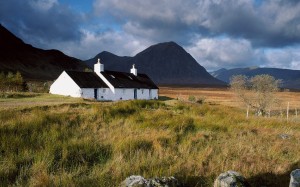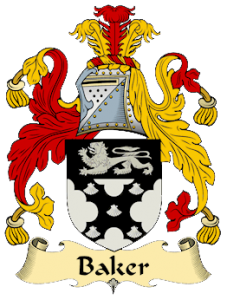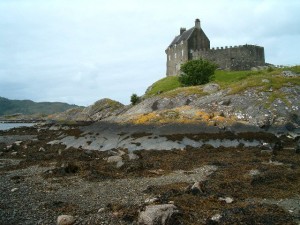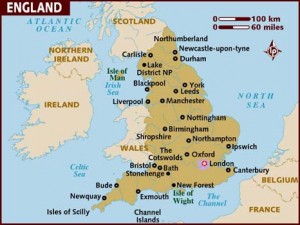
One of the surname websites I was studying some years ago had this to say, “The dark rolling moors of the Scottish/English border are home to the notable surname, Baker. Its ancient history is closely woven into the rich and beautiful tapestry of the border chronicles.”
From “Homes of Family Names in Great Britain” (1890) by Henry Brougham Guppy, comes this:
“Speaking generally, this surname is most numerous in the south of England, and diminishes rapidly in frequency as we proceed northward, until we reach the counties bordering Scotland, where it meets its extinction within sight of the Cheviot Hills. Baker is a name which prefers the coast; and the manner in which it abounds in almost all the coast counties of southern England (excluding Cornwall and Dorset), from Monmouth round to Suffolk, is very remarkable, and not at first sight intelligible. The counties of Monmouth, Somerset, Sussex, and Surrey stand foremost amongst those containing the greatest number of Bakers.”
This last quote is in agreement with the surname distribution maps you will see on this website, and it also lends some credibility to “the dark rolling moors” theory mentioned above. But, while there appears to be some truth in the Bakers being one of the family names involved in the old, endless English-Scottish border wars, this area is probably not the home of our popular Saxon surname. It is much more likely to have originated where Bakers have been most heavily concentrated over the centuries; that being in both the southwest and southeast of England. To restate what I’ve said elsewhere here, my Baker y-DNA haplogroup is I1 (I-M253), which can be summarized roughly as Anglo-Saxon-Scandinavian (or Northern Germanic-Viking). It is not Irish or Gaelic Scot (Celtic-Pictish), although there evidently was a Nordic-Anglo-Pictish mixture in Scotland. Of course, that still doesn’t say where in Ireland or Britain our families may have relocated before one or more of us emigrated to America. You will read below that the first official record of the Baker surname in England places a Baker in Durham (another natural location for I-M253).
In-depth research into some of the most ancient manuscripts such as the Exchequer Rolls of Scotland, the Inquisitio, the Ragman Rolls, the Domesday Book, baptismals, parish records, tax records, and cartularies gave researchers the first record of the name Baker in Durham, England where they were seated (settled) from very ancient times—some say well before the Norman Conquest and the arrival of Duke William at Hastings in 1066 A.D.
The name Baker appeared in many references, and from time to time the surname was spelled Baker or Bakere. These changes in spelling frequently occurred within the family name. Scribes and church officials spelled the name as it sounded, and frequently the spelling changed even during the person’s own lifetime.

Motto: Dum spiro spero (While I have breath I hope.)
Arms: Argent, on a saltier engrailed sable, five escallop-shells of the first, on a chief of the second, a lion passant of the first.
Crest: a dexter arm, embowed, vested azure, cuffed argent, holding in the hand ppr. an arrow of the last.
(And from another source on surname origin:) The family name Baker is believed to be descended originally from the Boernicians. This ancient founding race of the north was a mixture of Scottish Picts and Angles dating from about 400 A.D. By 1000 A.D., the race had formed into discernible clans and families—perhaps some of the first evidence of the family structure in Britain. From this area we get some of the most impressive names in history—surnames with unique nicknames such as the Sturdy Armstrongs (one of whom was, appropriately, the first to colonize the moon), the Gallant Grahams, the Saucy Scotts, the Angry Kerrs, the Bells, the Nixons, the Famous Dicksons, the Bold Rutherfords, the Pudding Somervilles, and most of the names ending in “son.”
From these fighting clans of the border, the surname Baker was found in Durham—where they were recorded as a family of great antiquity. They were seated at Elemore Hall and Crooke Hall where they held manors and estates in that shire. Sir George Baker was Recorder (Judge) of Newcastle on Tyne. By the 15th century the family had branched southward to many locations, to Worcestershire (Hill Court); Dunstable House in Surrey; Mudbury in Devon; London, Tarrington in Norfolk; Stanton in Northumberland; Bulley in York—all being members of the same family and owning vast estates. The junior branch of Bakers were at Sissinghurst in Kent, Worcestershire, Derbyshire, Somerset. For those interested in further research, we would recommend “Family Memorials….relating to Baker and Conyers” by R.G.B., printed in 1851. Notable amongst the family name during the early history was Sir George Baker.

The clans or families to the north of the border became Scottish after about the year 1000 A.D., and to the south they became English. Nevertheless, despite the border, many would still be united clans, but strangely loyal to the defense of their respective countries.
Clan feuds became so intense that in 1246 A.D., six chiefs from the Scottish side and six from the English side met at Carlisle and created a set of laws for all the border territory. These were unlike any prevailing laws in England or Scotland, or, for that matter, anywhere else in the world. For refusal of assistance when called, a person could be hanged on the instant without a trial. While clans were on this “hot trod” to recover stolen property (from which we get the modern expression “hot to trot”), they were protected from almost all eventualities.
 In 1603, the crowns of Scotland and England unified under James VI of Scotland who found it expedient to disperse the “unruly border clans.” The Border Clans were dispersed to England, northern Scotland, and to Ireland. Some were banished directly to the American colonies.
In 1603, the crowns of Scotland and England unified under James VI of Scotland who found it expedient to disperse the “unruly border clans.” The Border Clans were dispersed to England, northern Scotland, and to Ireland. Some were banished directly to the American colonies.
In Ireland, they were granted lands previously held by the Catholic Irish. They signed an “Undertaking” to remain Protestant and faithful to the Crown. They settled in county Cork in Ireland and in county Waterford.
The New World beckoned, and the many Scottish, Welsh, and English settlers then in Ireland, known as Ulster Scots (later in America, they were called Scots-Irish), had become disenchanted from religious and political persecution, poor crop harvests, generally poor living conditions, and lack of prospects.
As described above, these folks had, a few centuries earlier, migrated to the north of Ireland—some by force, some by choice—in what was called The Great Plantation—a sweeping program by the English crown to settle Northern Ireland with a more controllable, non-Irish people and also to rid the English-Scottish border country of a rowdy and troublesome bunch. But, they soon began to face similar or worse problems in Ireland, and the prospect of a fresh start in a new and bountiful land across the ocean became a common goal for many.
Beginning in the early 1600s they came. They sailed aboard the armada of sailing ships known as the “White Sails” which plied the stormy Atlantic. Some called them, less romantically, the “coffin ships.” Amongst the first pioneers who could be considered kinsmen of the family name Baker, of that same clan or family, were Dr. Baker who settled in Victoria, B.C. in 1862; Elizabeth Baker, who settled in Nova Scotia in 1750; Arnold, Benjamin, Charles, Christian, Edward, Elizabeth, Francis, Frederick, George, Henry, James, John, Michael, Phillip, Patrick, Richard, and William, all arrived in Philadelphia between 1840 and 1860. In Newfoundland, John settled in Fermeuse in 1675; Benjamin in Ferryland in 1681; Edward in Conception Bay in 1706; George in St. John’s in 1756; John as a fisherman in Trinity in 1758; Edward in Port de Grave in 1765; John as a proprietor of fishing rooms in Scilly Cove in 1800; William as a planter in Bird Island Cove in 1823; Edward as a fisherman in Brunette in 1851; John in Burin in 1861, and many more. There are many place-names of the Baker name in Newfoundland: Baker Brook, Baker Cove, Baker Point, Baker Loaf Island, and many more.
These pioneers became the nucleus of the first settlements from Maine to the Cumberland Gap. They provided much of the stock which produced the early presidents and governors of the United States. In Canada they settled Nova Scotia, St. Lawrence, and Ottawa Valley.
The family name Baker, provided many prominent contemporaries:
• Sir Benjamin Baker, K.C.B. K.C.M.G. F.R.S., Consulting Engineer to the Egyptian Government for the Aswam Dam, Joint engineer of the Forth Bridge, and engineer of the Central Tube Railway
• Sir Herbert Baker, Architect, who designed the Bank of England, and Rhodes House, Oxford
• Sir Joseph Baker; Air Chief Marshall
• Sir John Baker
• Richard Baker
• Broadcaster; Sir Roland Baker
• Rt. Rev. William Baker
• Richard Thomas Baker, Australian botanist, museum curator, and educator
• John Gilbert Baker, English botanist
• James Addison Baker III, American attorney and government official
Other well-known Bakers of old were:
• Walter le Baker, Devon, 1271, Hundred Rolls
• William le Bakere, Oxfordshire
• Alan le Baker, Sussex
• John le Baker, Somerset
• Roger le Baker, Somerset
• Jane Baker, baptised 1155?, St. Peter, Cornhill
Name Variations: Baker, Bakere, Baiker, Backer, Bakker (also Baxter, the feminine version of Baker).
References:
One or more of the following publications has been referenced.
The General Armory; Sir Bernard Burke – 1842.
A Handbook of Mottoes; C.N. Elvin – 1860.
English Surnames; C.M. Matthews – 1966.
A Dictionary of English Surnames; P.H. Reaney – 1958.